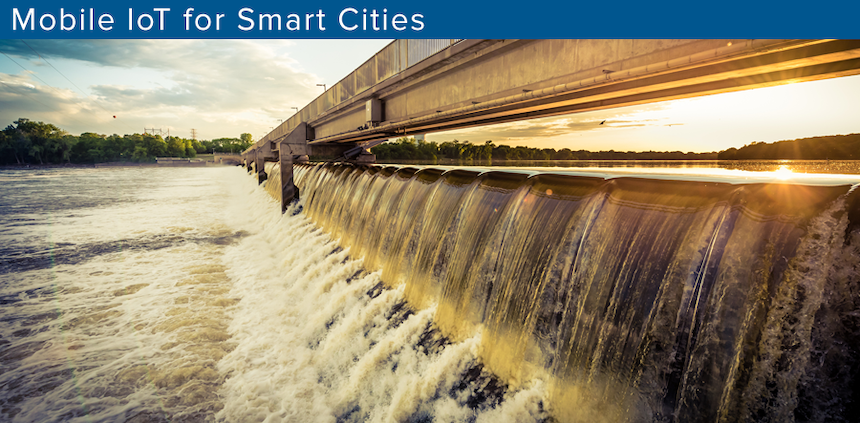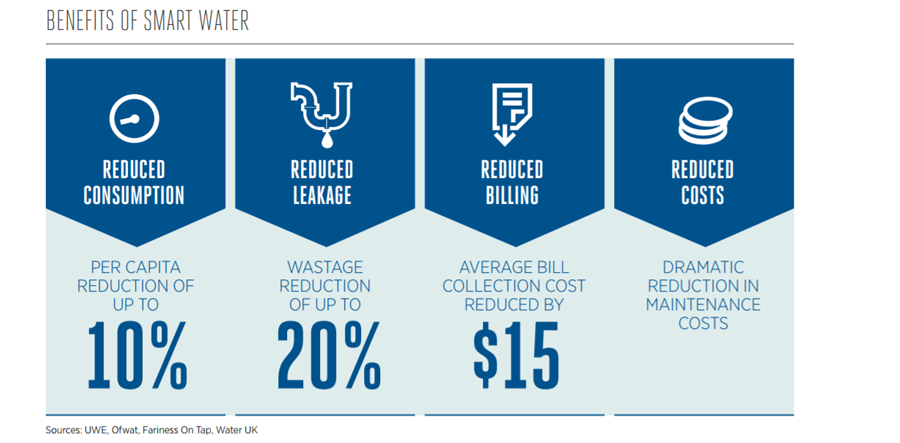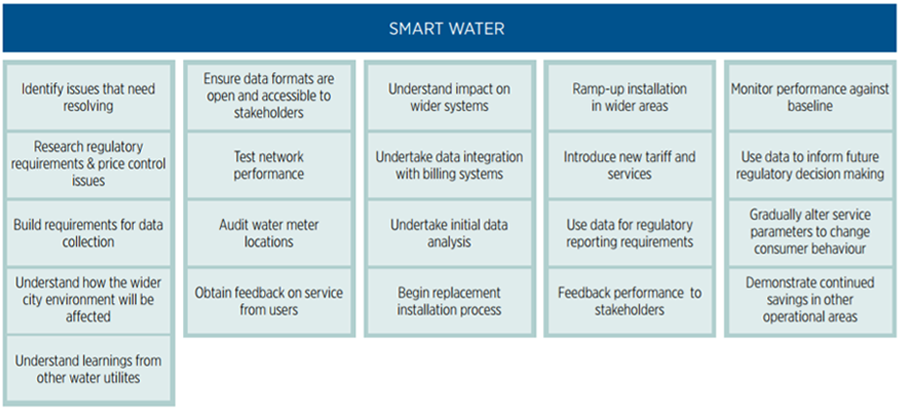Smart Water: A Guide to Ensuring a Successful Mobile IoT Deployment
Managing the supply of water is becoming a critical task for cities and their water utilities
around the world. Particularly as they try to create sustainable businesses and deal with the effects of climate change, which increases the propensity of drought in many parts of the world. At the same time, the Internet of Things (IoT) is being adapted more widely to fit the unique needs of monitoring water networks.
Our guide to smart water deployment will help you understand how Mobile IoT can be used to create a vastly improved water system for your city or municipality. On this page you will find key information on how to get started while our full report offers a more in-depth understanding of this process.
Value Chain
| Consumer | Utility | Regulation | External Forces |
| Consumption | Distribution | Legal Parameters | Climate Change |
| Billing | Quality Management | Customer Choice | Technology |
| Installation | Customer Engagement | Price Controls | Water Sources |
| Communications | |||
Read more about the smart water value chain
Communications Technology Procurement
Choices today will need to be used throughout a critical period of change in the water industry, and will need to adapt to many technological and behavioural changes on the horizon from the increase of data and decision making available to consumers and decision makers. Selecting a solution which will not adapt to future needs could be a costly mistake.
Cities, water utility companies and other decision makers need to take a holistic approach to their choice of communications and platform provider and should be thinking of several questions to ask, such as:
| Interest | Question | Answer is relevant when? |
| Performance | Is the system able to scale to meet your demands? | You intend to connect multiple water meters and assets; you intend to have real-time updates |
| Performance | What are the message delivery times? | You want to use the system to provide real-time updates; you want meter reads at regular intervals through the day |
| Performance | What is the network coverage? | You intend to offer a service across a city; you intend to connect meters and assets in hard to reach areas such as underground |
| Security | Does the network support end-to-end encryption and authentication? |
You need to meet a required security or privacy standard |
| Communications Infrastructure |
Does the network operate in licensed spectrum? | You value high quality of service and low risk of interference |
| Communications Infrastructure |
What additional infrastructure is needed to support the service? | You want to keep your capex costs low; You don’t want a complex implementation |
| Communications Infrastructure |
Can the service provider be changed? | You want to avoid vendor lock-in and re-negotiate contracts periodically |
| Communications Infrastructure |
Does the service have a roadmap to new service features? | You want to take advantage of new service features as they are introduced |
| Data | Does the service support open data formats? | You intend to use other systems to manage or bill for water services |
| Data | Does the platform support Big Data? | You intend to analyse data for trends or have an overall view of the water demand and supply by combining with other datafeeds |
Route Maps
“Starting small” is a good way to get up to speed with new methodologies whilst reducing the risk of mistakes which are difficult to reverse. Building upon this initial step with a series of iterative changes as the project grows will ensure that the full commercial service is more likely to be sustainable and deliver citizen engagement. The core stages of growth for a smart water service are outlined below.
Download the full report Smart Water: A Guide to Ensuring a Successful Mobile IoT Deployment



